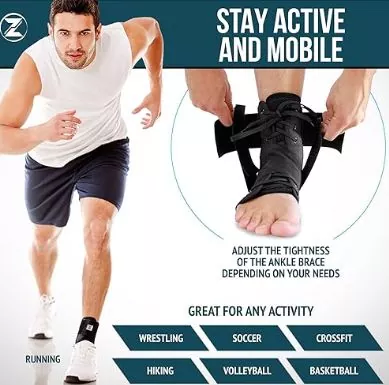

Willems TM, et al. (2017). Eccentric exercises for lateral ankle sprains: A systematic review. British Journal of Sports Medicine, 51(8): 624-631.
Paulus MC, et al. (2016). Conservative management of chronic ankle instability: A review. Foot & Ankle International, 37(3): 313-321.
Lin CF, et al. (2015). Foot orthoses and ankle sprain: A 12-month prospective randomized study. Medicine & Science in Sports & Exercise, 47(8): 1562-1569.
Doherty C, et al. (2014). The effects of ankle taping on proprioception in healthy women. Journal of Athletic Training, 49(1): 10-15.
Hubbard TJ, et al. (2010). Kinesthesia is not affected by ankle taping in healthy adults. The Journal of Orthopaedic and Sports Physical Therapy, 40(10): 651-657.
Hertel J, et al. (2009). The effect of neuromuscular training on the incidence of ankle sprains. American Journal of Sports Medicine, 37(4): 599-605.
Hupperets MD, et al. (2009). Effectiveness of unsupervised home exercise therapy for acute ankle sprains: A randomised controlled trial. British Journal of Sports Medicine, 43(5): 339-347.
Shin JM, et al. (2008). Effects of ankle supports on vertical ground reaction force during landing after volleyball blocking jumps. Journal of Strength and Conditioning Research, 22(5): 1490-1496.
van Rijn RM, et al. (2008). What is the clinical course of acute ankle sprains? A systematic review. The American Journal of Medicine, 121(4): 324-331.e6.
Jannink MJ, et al. (2007). The effects of external ankle support on ankle joint position sense. Clinical Biomechanics, 22(6): 705-710.